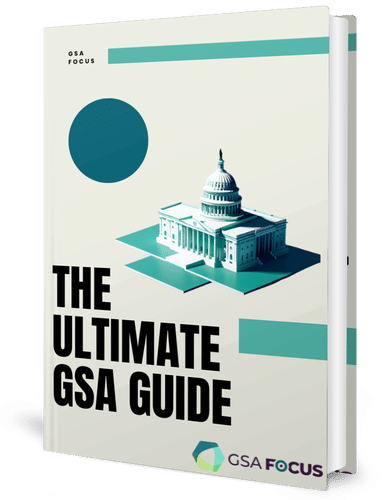CAGE Code – Commercial and Government Entity CodeIf you’re involved in the U.S. defense industry, you may have heard the term “CAGE code” thrown around. But what exactly is a CAGE code and why is it important?
A CAGE code, or Commercial and Government Entity code, is a unique identifier assigned to contractors, suppliers, and businesses that work with the U.S. government. It is a five-digit alphanumeric code that provides a standardized method of identifying a given entity.
In this section, we will provide a comprehensive overview of what a CAGE code is and its significance in the U.S. defense industry sector. We will also discuss how to perform a CAGE code lookup or search to find relevant information.
Key Takeaways:
Table of Contents
Toggle- A CAGE code is a unique identifier assigned to entities that work with the U.S. government.
- It is a five-digit alphanumeric code that provides a standardized method of identification.
- Performing a CAGE code lookup or search can provide relevant information about a given entity.
Importance of Cage Codes in the U.S. Defense Industry
Cage codes play a crucial role in the U.S. defense industry, serving as a unique identifier for entities doing business with the government. In this section, we will discuss the requirements for obtaining a cage code and the importance of verification to ensure accurate information in the database.
Cage Code Requirements
Any company or organization doing business with the U.S. government must have a cage code. The Department of Defense issues these codes to entities that meet certain criteria, including:
- Registered with the System for Award Management (SAM)
- Have a valid Tax Identification Number (TIN)
- Be located within the United States or its territories
Additionally, companies must meet various other requirements, such as compliance with applicable laws, regulations, and standards.
Cage Code Verification
Verification of cage codes is essential to ensure the accuracy of information in the database. The Department of Defense regularly reviews the information in the database and removes any invalid or inaccurate listings. They also require entities to review and update their information regularly to ensure its accuracy.
A comprehensive database of verified cage codes is crucial in the government procurement process, as it helps ensure that contracts are awarded to legitimate organizations and that the government is getting the best value for their money.
In the next section, we will provide a step-by-step guide on how to get a cage code.
How to Get a Cage Code: Step-by-Step Guide
If you are a business operating in the U.S. defense industry and wish to participate in government procurement processes, you need a cage code. Here’s a step-by-step guide on how to get a cage code:
- Visit the System for Award Management (SAM) website to register your business. SAM is the primary database used by government agencies to identify potential contractors.
- Provide all required information about your business, including legal name, address, tax identification number, and type of business entity.
- Designate an Electronic Business Point of Contact (EBPOC) and an Authorized Entity Administrator (AEA) who will manage your business’s SAM registration.
- Once your SAM registration is complete, log in to the Defense Logistics Agency (DLA) website and complete the Defense Logistics Information Service (DLIS) form. This form is necessary to obtain a cage code.
- The DLIS form requires information about your business’s capabilities, such as the products or services you offer, as well as any relevant certifications or accreditations.
- Submit the completed DLIS form to the DLA. It may take a few days for your cage code application to be processed.
- Once your application is approved, your business will be assigned a unique cage code.
It’s important to note that your business’s SAM registration must be renewed annually to maintain an active cage code. Additionally, any changes to your business’s information or capabilities should be updated in both SAM and the DLIS form to ensure accuracy in the database.
Cage Code Lookup: Accessing the Database
Performing a cage code lookup is crucial for organizations involved in government procurement processes. Accessing the cage code database is the primary source for obtaining information about suppliers and manufacturers doing business with the U.S. government.
There are various resources and platforms available for accessing the cage code database, such as the Defense Logistics Agency (DLA) and System for Award Management (SAM) websites.
| Resource/Platform | Features |
|---|---|
| Defense Logistics Agency (DLA) | – Provides access to the CAGE (Commercial and Government Entity) code database – Includes a search function to find specific codes and related information – Offers additional resources, such as historical data and frequently asked questions |
| System for Award Management (SAM) | – Provides access to the CAGE (Commercial and Government Entity) code database – Includes a search function to find specific codes and related information – Offers additional resources, such as assistance with SAM registration and updates to entity information |
It’s important to ensure that the information obtained from the cage code lookup is accurate and up-to-date. This can be achieved through regular verification and updates to the database.
By accessing the cage code database and performing a cage code lookup, organizations can gain valuable insights into potential suppliers and manufacturers, enabling them to make informed decisions about doing business with government entities.
Ensuring Accuracy and Updates in Cage Code Database
It is essential to maintain accuracy in the cage code database to ensure the reliability of information available for government procurement processes. Proactive measures must be taken to verify and update the data regularly.
The Importance of Cage Code Verification
Cage code verification is crucial to maintain the accuracy of information in the database. It involves reviewing and cross-checking the information provided by the cage code holder to ensure that it is up-to-date and accurate. The verification process confirms that the company or entity still exists, and the information provided is legitimate.
To verify a cage code, you can contact the Defense Logistics Agency (DLA) or utilize other verification tools available online. The DLA provides a cage code search tool on their website that allows you to cross-check the information provided with the existing database. It is important to note that the verification process may take time, and it is recommended to plan accordingly.
Cage Code Requirements
To acquire a cage code, certain requirements must be met. The entity must be registered with the System for Award Management (SAM) and have a valid Data Universal Numbering System (DUNS) number. The applicant must also provide accurate and up-to-date information about the entity, such as legal name and physical address.
Additionally, to maintain an active cage code, the entity must ensure that all information in the database is accurate and up-to-date. Failure to do so may lead to the code’s deactivation or removal from the database. Therefore, it is recommended to review and update the information regularly.
In conclusion, maintaining accuracy and regular updates in the cage code database is crucial to ensure reliable information for government procurement processes. Verification and adherence to cage code requirements are essential in this process.
Links:
CAGE Code – Commercial and Government Entity Code
Free CAGE Code Search Tool



